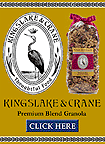Abalone:
This gastropod can be found along the coasts of California, Mexico
and Japan. The edible portion is the "adductor muscle"
(false foot) by which it clings to rocks. Its iridescent ear-shaped
shell is the source of mother-of-pearl
Abbacchio:
Italian for a young lamb.
Ablanc:
French for in white. Abruzzes: Italian dishes with hot chilies.
Absinthe:
A green bitter tasting liqueur made from wormwood & herbsAccent:
Brand name for a flavor enhancer with monosodium glutamate (MSG).
Acerola:
A small West Indies deep-red Aceto: Italian for vinegar. Achar:
East Indian for pickled & salted relish.
Achee:
A bright red tropical fruit containing three large black seeds.
Acidulated:
Water with lemon, vinegar or lime added, used to stop discoloration.
Acorn:
Fruit of the oak tree.
Acorn squash:
Oval greenish squash with an orange flesh.
Adobo sauce:
Mexican dark red sauce made with hot chipotle chilies.
Advocaat:
A Dutch beverage made with brandy, egg yolks and sugar.
Aemono:
Japanese for dressed food.
Aerate:
To sift.
Affumicato:
Italian for smoked. Agar: Gelatinous, tasteless dried seaweed
that is used as a thickening agent
Agave:
Used in the making of Tequila
Agedashi:
Japanese dish of deep fried tofu.
Agemakigai:
Japanese for jackknife clam
Agemono:
Japanese for deepfrying. Aglio: Italian for garlic.
Aglioeolio:
Italian for garlic & oil.
Agneau:
French for lamb. Agnello: Italian for lamb.
Agnolotti:
Small shell type pasta that is stuffed.
Agresto:
Italian for verjuice.
Agrodolce:
Italian for sweet & sour.
Aguacate:
Spanish for avocado.
Aguardente:
Portuguese for brandy.
Aguardiente:
Spanish for burnt water, low quality spirits.
Aguardientedecaña:
Liquor made from sugar cane.
Ahi:
These tuna reach about 300 pounds in weight. They feature a pale
pink flesh that is relatively mild. Also called "Yellowfin
tuna."
Aigredoux:
French for sweet & sour.
Ainame:
Japanese for rock trout, greenling
Aioli:
Garlic mayonnaise.
Aji:
Japanese for horse mackerel.
Akagai:
Japanese for red clam, Ark shell, Bloody clam
Akala:
A sweet juicy red berry from Hawaii.
Akami:
Japanese for tuna filletAkoudai: Japanese for red rockfish
Aku:
This small tuna (6 to 8 pounds) has a light-colored meat similar
to yellowfin. The Japanese call this fish "Katsuo."
Akule:
Salted and dried Hawaiin fish; also known as big eye scad.
Ala:
The style of.
Alacarte:
Each item priced separatelyAlamode: Ice cream on top of pie
Alargenteuil:
French dish prepared with asparagus.
Alaskan
cod: This saltwater fish, which is not a true cod, has
a soft textured flesh and a mild flavor. Its high fat content
makes it a good fish for smoking. Also called "Sablefish."
Albacore:
A highly prized, mild-flavored tuna that weighs between 10 and
60 pounds. This high-fat fish is the only tuna that can honestly
be called "white." It is the most expensive variety
of canned tuna.
Albertsauce:
Sauce with horseradish, butter, flour and cream served with beef
Abondiga:Spanish
for meatballs usually served in a tomato sauce. Albumin: Protein
portion of the egg whites.
Ale:
Type of beer stronger than lager and more bitter due to the hops.
Alewife:
One of the most popular members of the herring family, the alewife
is
Anadromous:
This fish provides high-fat flesh with a fine, soft, texture.
Aleuron:
Protein substance found in the bran of wheat kernels.
Alfalfa:
Fine stringy fibrous sprouts are grown for salads and sandwiches.
Alfedo
Sauce: Sauce made with butter, cream and grated Parmesan
cheese
Alforno:
Italian for roasted or baked.
Alkali:
A substance that neutralizes acids, also known as forms of salt.
Allemande
Sauce Veloute: Type sauce thickened with egg yolks. Also
known as parisienne sauce.
Alligator:
A large aquatic reptile that grows up to 19 feet in length. The
meat is generally only available in its native regions--Louisiana
and the Gulf States. Alligators feature meat ranging from white
to dark-mild to strongly flavored.
Allspice:
Spice that comes from the pea-sized berry of the evergreen pimiento
tree, native to the West Indies and South America. It tastes somewhat
like a combination of cinnamon, nutmeg, and cloves.
Allumettes:
French term for match; thin strips of puff pastry filled with
savory ingredients served as hors d´œuvres
Almond
paste: A paste made with blanched ground almond, sugar
and glycerin.
Alsatian:
A larder filled with a wide range of foods originally grown in
Alsace Germany
Amadai:
Japanese for horseheadAmaebi: Japanese for sweet shrimp, northern
shrimp
Amandine:
Garnished with almonds.
Amaranth:
A slightly sweet flavored weed used in salads and for cooking,
high in protein.
Amaretti:
Macaroon type cookie made with bitter-almond paste or apricot-kernel
paste.
Amaretto:
A liqueur with the flavor of
Amberjack:
A lean, mild fish found along the South Atlantic coast. Difficult
to find in markets; usually sold whole.
Amchur:
A greyish green powder made from unripe mangoAnkou: Japanese for
angler, frogfish, monkfish, goosefish, devilfish
Anago:
Japanese for conger eelAnasazi: Sweet-flavored, dried red and
white bean.
Anasone:
Anise-flavored liquor drier and contains less alcohol than anisette.
Ancho:
Dried chili with a light sweet flavor ranging from mild to pungent;
also known as pablano chili A deep-mahogany, heart shaped chili,
about 3 inches long by 2 1/2 inches wide at its widest point.
The ancho (meaning ''broad" in Spanish) is a member of the
Cayenne group. Full flavored and mild. Available dried in Latin
American markets.
Anchovy:
There are many species of small, silvery fish known as "anchovies,"
but the true anchovy comes from the Mediterranean and southern
European coastlines. Often filleted, salt-cured, and canned in
oil. Used sparingly to flavor foods. Anchoyade: Paste made with
anchovies, garlic and sometimes olive oil.
Andalousesauce:
Mayonnaise mixed with tomato puree and pimiento.
Andouille:
Smoked spicy sausage made with pork chitterlings and tripe
Angelica:
Candied leaf stalks of an aromatic plant.
Angler
fish: This large low-fat, firm-textured salt-water fish
has a mild, sweet flavor that compares with lobster. Sometimes
referred to as "poor man's lobster." Also called "Monkfish,"
and "goose-fish."
Angostura
bitters: Trade name for bitters.
Anise:
A sweet liquorice flavored annual plant used for flavoring
Aniseseed:Taste
like liquorice, sweet & minty. Also known as Sweet Cumin.
Anisette:
Licorice-flavored liqueur made with anise seed.
Annatto
Seed: (also known as achiote seed): Rusty-red dried seed
of a tropical American tree. In crushed form it gives food a delicate
flavor and a deep golden-orange color. Available in l-ounce packs
and jars at Latin American groceries or stores specializing in
foods from India. Keeps indefinitely in a tightly covered jar.
No substitute.
Antipasto:
Italian for "before the pasta".
Antojitos:
Mexican for little whims or appetizers.
Aojiso:
Beefsteak plant, perillaAoriika: Broadmantle squid
Aoyagi:
Tough shell, surf clam, hen clam, skimmer
Aonoriko:
Seasoning made from dried seaweed
Apee:
A soft cookie made with sour cream and sugar.
Aperitif:
French term for a light alcoholic beverage consumed before a meal.
Appenzeller:
A lightly sweet whole milk swiss cheese with a golden rind.
Apple butter:
A spread made with cooked apples, sugar, cider and spices.
Applejacks:
Brandy made from apple cider.
Applesauce:A
puree of cooked apples
Apricot:
Cousin of the peach
Aquavit:
Scandinavian liquor made from potatoes or grain, flavored with
caraway seed.
Aquavitae:
Latin for water of life, a clear distilled brandy.
Ara:
Japanese for sawedged perch
Aram:
Sandwich formed by spreading ingredients on a lahvosh.
Arctic
bonito: This small tuna (6 to 8 pounds) has a light-colored
meat similar to yellowfin. The Japanese call this fish "katsuo"
and the Hawaiians call it "aku."
Arborio:
Italian grown short grain rice high in starch that gives risotto
its creamy texture. The grain is shorter than short grain rice.Armagnac:
French brandy aged in oak casks for 40 years.
Aromatic:
Plants that add flavor to food and beverage.
Arrowroot:
Thickening agent with twice the power of flour, turns clear when
cooked.
Arugula:
Bright green somewhat bitter aromatic leaf used in salads.
Asadero:
Mexican white cheese made from cows milk.
Asafetida:
A fennel-like plant with a garlic flavor.
Asamgelugor:
Adds a subtle sour taste to foods, called tamarind skin or dried
tamarind but isn't tamarind. Asari: Japanese for shortnecked clam
Asatsuki:
Japanese for chives
Aseptic:
Type of packaging letting a little amount of air into the food
prolonging its life in most cases.
Asiago:
Italian semi-soft light yellow cheese when aged for a year becomes
good for grating.
Aspartame:
A sugar substitute that is said to be 180 times sweeter than sugar
Aspic:
A clear jelly from meats, fish and poultry.
Assaisonné:
French for seasoned
Astispumante:
Northern Italian sweet white wine used for desserts or as an apértif.
Atemoya:
South American and South Indies tropical plant with a sweet custard
like pulp with black seeds taste like mango and vanilla now cultivated
in Florida.
Aubleu:
Fresh fish poached in a courtbouillon. Augratin: To brown in the
oven or salamander foods topped with cheese or breadcrumbs, also
known as gratiner.
Aujus:
French for with juice best known when serving the juice of the
beef with prime rib.
Aulait:
French for with milk. Aunaturel: French for served natural or
un-cooked.
Aurorasauce:
Bechamel sauce with enough tomato puree to give it a light pink
hue.
Avocodo:
A green fruit with a dark green skin and a pit, used in guacamole.
Pear-shaped bland buttery fruit available the year round at fine
groceries and fruit and vegetable stands. Especially plentiful
from January to April. Avocados vary widely in color, texture
of skin, and size. Skin may range from smooth light green to pebbled
dark green or purple. Avocados may weigh from a few ounces to
as much as 2 pounds. Their flavor has no relationship to their
color and size. When ripe, this fruit yields to gentle pressure
of the fingers. Hard avocados will ripen in a day or so. If a
ripe avocado is not to be used at once, it may be refrigerated
for a day or two. When the fruit is cut or peeled, sprinkle its
exposed surfaces at once with fresh lemon or limejuice to prevent
discoloring.Awabi: Japanese for abalone
Ayu:
Japanese for Sweet fish |


































